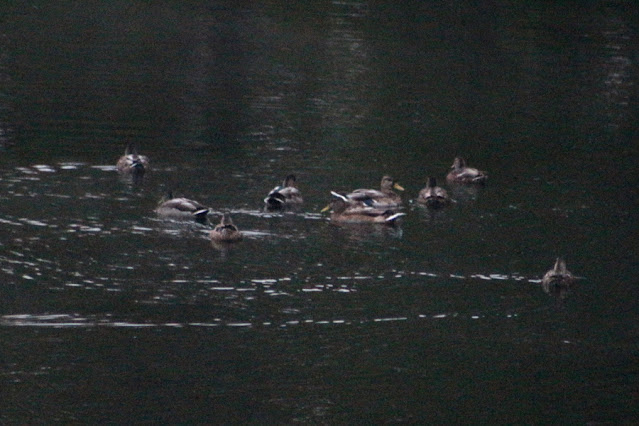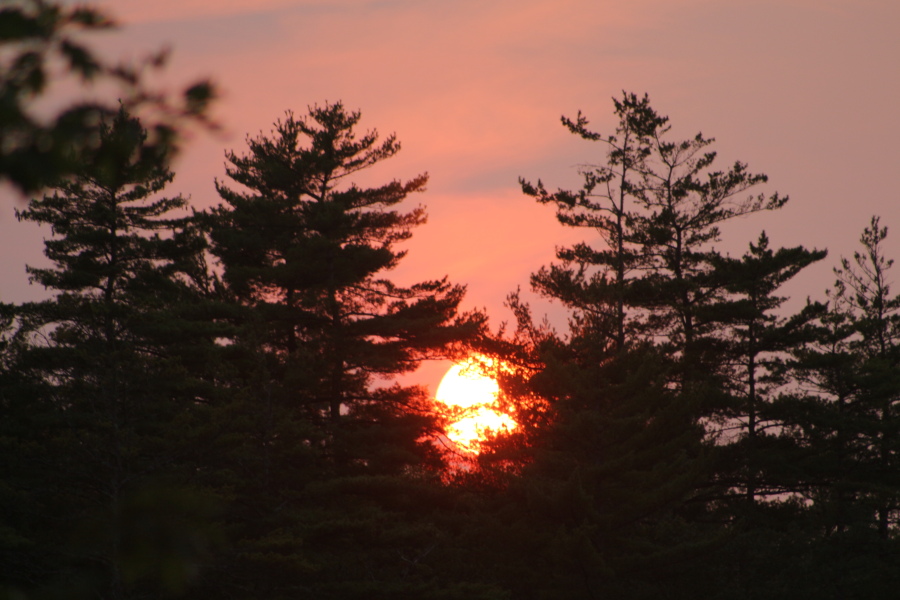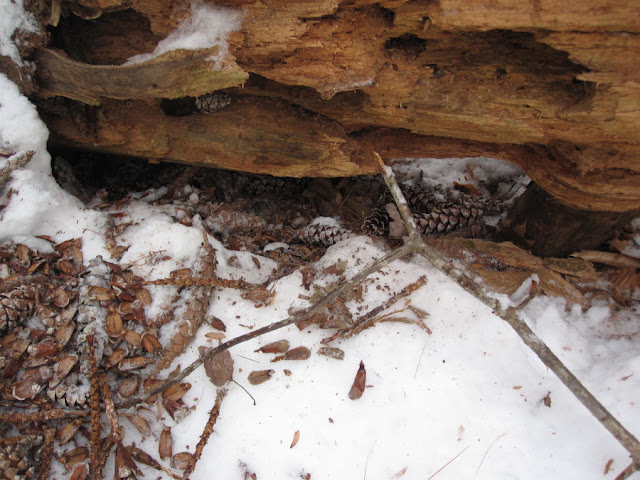There's no denying it any longer, fall is coming. We spent last week on Penobscot Bay in Maine, and driving back through western Maine and the northern Lakes Region there was a lot of color in the hills. But first, yesterday, on a morning walk, an impressive Barred Owl flew along my path and landed in a tree just 50 yards away.
 |
| A barred owl studies me carefully. |
We just watched each other for quite some time, he occasionally turning his head around to check out the surroundings.
 |
Eventually he must have decided it was better to move on to find hunting grounds undisturbed by humans, and off he went, completely silent wings carrying this large raptor.
 |
| Too bad I wasn't quick enough to catch all of it. |
Owls have some highly adapted features that allow them to be very successful hunters. Of course they can turn their heads completely around to scan for food in all directions, but they also have incredible hearing, with ears located such that they can use sound for direction finding to pinpoint the exact location of a tiny mouse scratching around on the forest floor. Then, when they go on the attack, extremely fine texturing on the edges of their wings allow a nearly-silent flight so their prey never hears them coming. And at night, those large eyes provide keen eyesight even in dim light. Those poor little rodents hardly stand a chance.
Now back to Maine. We took several nice walks along the shore as well as on the mountains that rise just beyond the shoreline. The coast of Maine is another geologist's bonanza of exposed continent building and destruction, with the mountains on Penobscot Bay being the result of continental plates colliding, leaving a range of mountains right beside the ocean.
 |
| The view from Mt. Battie, right at the edge of Camden Harbor. |
 |
| Blueberry fields on the top of Beech Hill overlooking Penobscot bay. |
The lime kilns in Rockport tell the story of limestone deposits left near the equator some 500 million years ago and carried to their current location by shifting tectonic plates.
 |
| Lime kilns right at the Rockland Harbor allowed efficient loading onto ships. |
The limestone was burned in these huge kilns at 1000 degrees centigrade (1800 Farenheit) to produce lime (calcium oxide) which was used in mortar and plaster to build the growing cities of Boston and New York. For many years in the 1880's this part of Maine provided all the lime for the east coast, peaking in 1892 when 1.4 million casks of lime were shipped from Rockport's 86 kilns. [Ref: Penobscot Marine Museum]
We didn't see any unusual wildlife on our walks, just the usual seabirds including some we have in the Lakes Region including cormorants and great blue heron.
 |
| A heron stalks its prey along the Passagasswakeag River upstream from Belfast. |
I kept looking for loons that had already made their way to the Maine coast for the winter but I didn't find any. Certainly our new loon family hasn't left their summer lake yet. Here's the latest on Harold and Betty whom are doing fine, and still being attended to by both parents.
 |
| Our loon family enjoys a beautiful Saturday on Lake Wicwas. |
But their parents seem to be forcing independence on them. We watched one of the parents bring up a fish, but in stark contrast to earlier days, neither chick went scurrying over to collect it.
 |
| Bringing up a fish for the kids' home-schooling. |
They both seemed rather indifferent, as if they knew what was going to happen next. The parent brought the fish near to them, and dropped it in the water, letting them know, if you want to eat, you'd better learn to fish! One of them was hungry enough to take the challenge.
 |
| "I'll get it!" |
 |
| "Where did you go?" |
 |
| "There it is!" |
I couldn't tell if it ended up with the fish in its stomach, but it sure made an effort to chase the little minnow down! Yes, cold weather is coming and the chicks need to learn how to survive on their own.
In addition to the loons, there were lots of people out enjoying the beautiful summer-like weather this weekend. But like the loons, we know it's time to prepare for what's ahead.
 |
| Maples and blueberries are changing now. |
Next week looks to be about peak foliage in the Lakes Region.





























